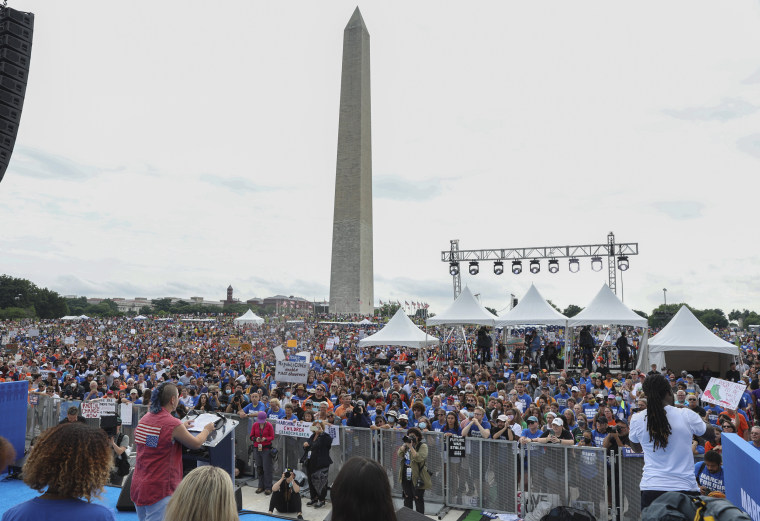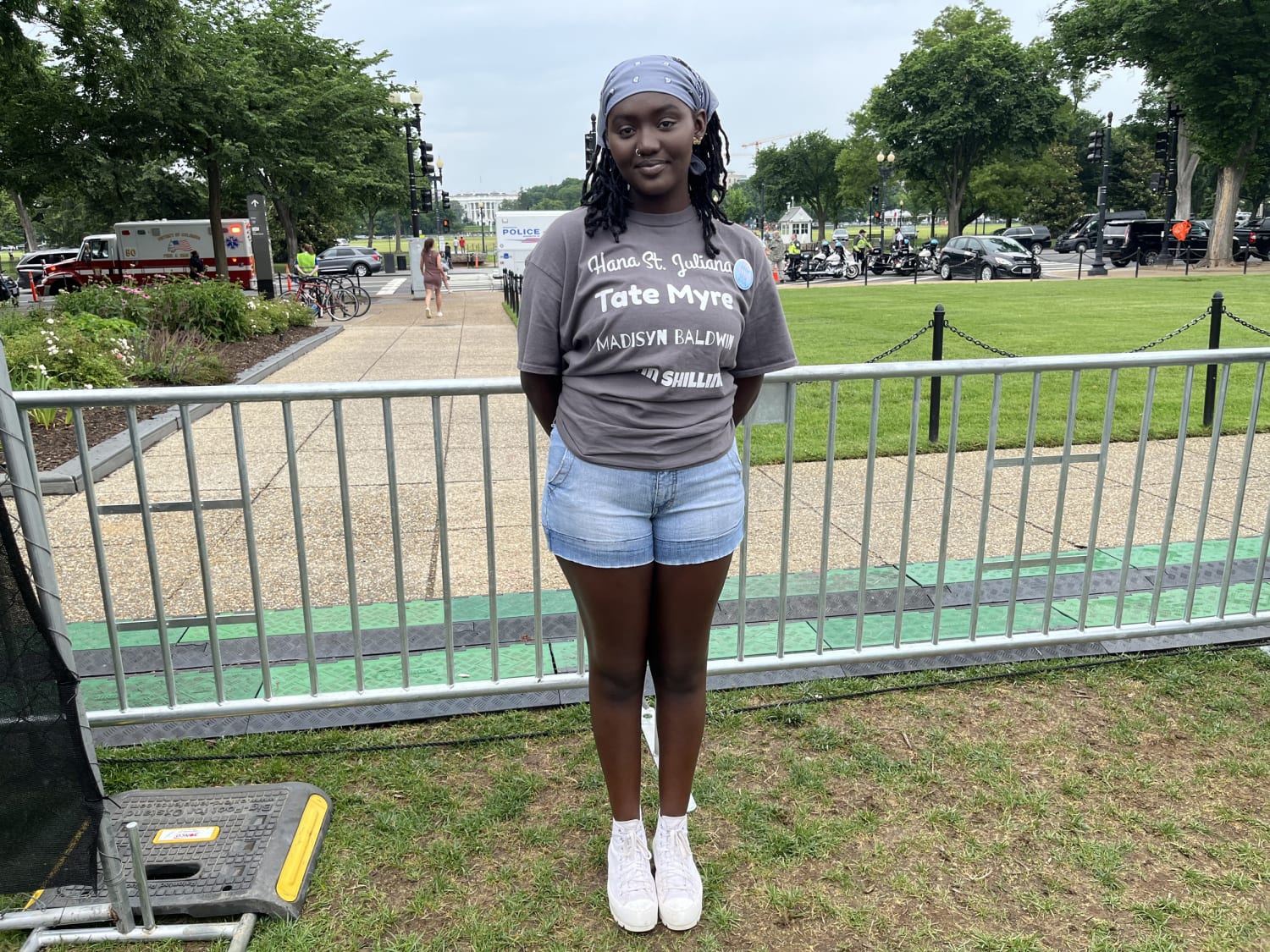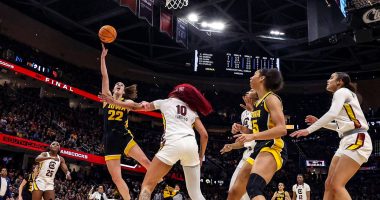Less than a year ago, Zoe Touray was inside a classroom at Oxford High School in Michigan when a mass shooter opened fire. Touray heard the door-handle to the classroom jiggle and assumed the shooter was trying to enter. She and her fellow classmates escaped through a window, making a short jump to safety.
Four students were killed in the shooting: Hana St. Juliana, Tate Myre, Madisyn Baldwin and Justin Shilling.
Touray, age 18, wore a shirt displaying their names at the March for Our Lives rally in Washington, D.C., on Saturday. The youth-led movement, created in 2018 by survivors of the Marjory Stoneman Douglas High School shooting, has lifted Touray’s spirits in the wake of tragedy, she said.

But her emotional recovery hasn’t been easy.
“I had a really hard time,” she said. “I didn’t really want to talk to my family much. It was more like being in my bed at home all day until somebody called me to hang out.”
News of other school shootings, like the recent deadly attack at Robb Elementary in Uvalde, Texas, can also dredge up painful memories.
“I remember not wanting to be alone that day,” Touray said of hearing about Uvalde. “I was crying in my room for a little bit.”
Other survivors of gun violence as children have faced a similarly difficult path in the transition to adulthood.
“My PTSD has me feeling suicidal thoughts that I’ve managed to very positively turn toward anger instead, and that’s what I’m doing here today,” X Gonzalez, a 22-year old survivor of the Marjory Stoneman Douglas shooting, said during a speech at Saturday’s rally.
“We know that you know gun violence is an issue,” they added, speaking to members of Congress. “We brought the topic to you with international attention and resources four years ago. We as children did the heavy lifting for you.”
RuQuan Brown, a 20-year-old student at Harvard College, also expressed his frustration at having to speak to a crowd about gun violence on Saturday instead of watching the NBA Finals with his stepdad or hanging out with friends.
Brown said he was five years old when his mother’s boyfriend was murdered. It was the first time he can remember crying, he said. In the years to come, he would lose a stepfather and football teammate to gun violence and learn the devastating news that both his grandfather and cousin had been shot.
“I was walking down my street every day and I was so afraid of losing my life because so many D.C. public school kids were murdered walking home from school or hit with a stray bullet,” he said. “I just felt like I was next.”
‘I felt like I was drowning and I needed this to keep me alive’
Children exposed to gun violence may experience anger, withdrawal or posttraumatic stress as a result.
A 2020 study identified an increased use of antidepressants among students who lived within five miles of a fatal school shooting versus those who lived 10 to 15 miles away. Another study found that children who lived within a few blocks of a shooting had higher odds of showing up to the emergency room for mental health concerns after the shooting occurred.
The March for Our Lives movement has helped young survivors channel their trauma into positive action. Brown and Touray are optimistic that new gun restrictions such as universal background checks could get passed, though Brown is hoping for a greater sea change.
“Voting has not worked for poor people. We’re not ever set free or made safe by the vote,” he said. “None of these things are going to change until Americans decide that love is the most important thing.”
Survivors have also found personal ways of coping. Touray said it helped to visit her high school in the wake of the Oxford shooting. She and her friends would “goof around” and ride skateboards in a parking lot near the school to reclaim a sense of normalcy, she said.
“We had such a connection to [the school] after everything that happened,” she said. “Nobody really wanted to leave, especially when we graduated this year.”
Lately, when she’s feeling down, she blasts her favorite playlist and dances around. It also helps to talk openly with other classmates who survived the shooting.
“We actually talk about it all the time,” she said. “There’s never been a conversation that I’ve had, a sleepover or hangout, where we haven’t talked about the event.”
Brown has found a creative outlet through his clothing line, Love1, which donates a portion of the proceeds to communities affected by gun violence.
“I felt like I was drowning and I needed this to keep me alive, keep me focused on something more positive,” he said.
Both students are looking forward to the future. In the spring, Touray will enter her freshman year at North Carolina Agricultural and Technical State University and Brown will start his junior year at Harvard.
“I’m 20 years old, and I just accepted that I have an opportunity to live until 100,” Brown said. “I was only planning to live to about 30 years old. That’s so crazy, because I deserve so much more than that.”
Source: | This article originally belongs to Nbcnews.com










